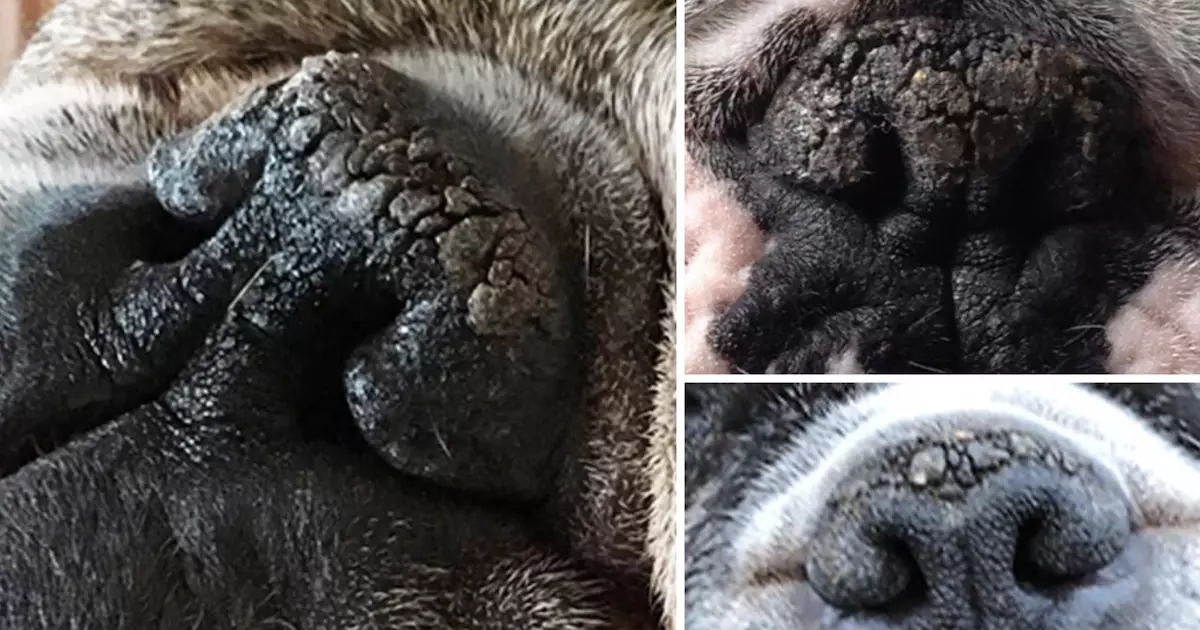For many dog owners, a dry nose is a common sight, often dismissed as a small quirk of pet care. However, nasal hyperkeratosis—also known as nasodigitalis—goes beyond that simple dryness, manifesting as an overproduction of keratin that leads to an uncomfortable, crusty snout. This condition can occur in various breeds, particularly those with unique physical traits. While nasal hyperkeratosis is considered non-life-threatening and primarily a cosmetic concern, it significantly impacts a dog’s overall quality of life. Dogs rely on their noses for essential sensory interaction with their environment, and discomfort can lead to behavioral changes that go unnoticed by pet parents.
The Breeds at Risk and Underlying Issues
Certain breeds are more susceptible to this condition due to their physical makeup. Brachycephalic breeds, like Bulldogs and Pugs, and smaller breeds such as Pomeranians are noted for having drier noses. The correlation between breed characteristics and immune system integrity is fascinating—extremely small or heavy dogs may struggle with health issues that indirectly contribute to the development of nasal hyperkeratosis. The flattened faces of brachycephalic breeds can also compromise normal nasal function, further complicating their ability to maintain moisture, which is essential for healthy nasal tissue.
Natural Solutions: The Power of Oils
Relieving nasal hyperkeratosis might seem daunting, but numerous natural remedies make the process manageable. A product like Natural Dog Company’s Snout Soother exemplifies the ideal approach, combining natural oils with nourishing butters that penetrate through layers to provide relief. Ingredients such as coconut oil, jojoba oil, and shea butter each play a dynamic role: the lighter oils deliver immediate hydration, while heavier butters integrate deeper into the skin’s layers, creating a comprehensive moisture barrier.
For effective usage, pet parents should apply these balms two to three times a day for a few days. Observing changes in the nose’s texture can guide subsequent treatment; a gentle approach with continued maintenance is key. If the crust begins to crumble and flake off, transitioning to a reduced frequency of application—2-3 times a week—can ensure that the nose remains healthy without overwhelming it.
Staying Ahead of Nasal Hyperkeratosis
Prevention and proactive care are crucial in managing nasal hyperkeratosis. Regular nose assessments and immediate moisturizing can keep crustiness at bay, especially for breeds at higher risk. While there’s no guaranteed method to eradicate hyperkeratosis completely, consistency in care can lead to noticeable improvements. Moreover, incorporating good nutrition and seasonal adjustments in pet care routines can further support nasal health. Immunocompromised dogs may need an extra layer of attention, and owners should educate themselves about possible underlying health issues impacting their pets’ well-being.
Ultimately, understanding the nuances of nasal health in dogs not only enriches the pet-owner relationship but enhances the canine’s quality of life through informed and compassionate care.

